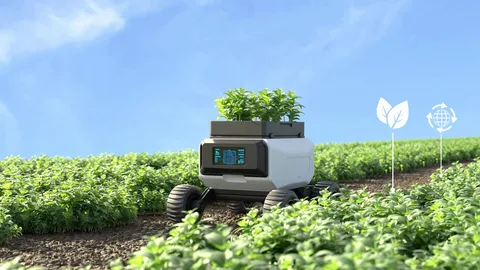As the world grapples with the pressing challenges of climate change, food security, and sustainable resource management, innovative farming practices have become crucial. Among these, climate-smart farming: the intersection of precision agriculture and environmental stewardship emerges as a transformative approach that addresses both productivity and ecological responsibility.
Understanding Climate-Smart Farming
Climate-smart farming refers to agricultural methods designed to increase productivity sustainably, enhance resilience to climate variability, and reduce greenhouse gas emissions. This approach is not just about growing more food but doing so in a way that preserves the environment and supports long-term agricultural viability.
At its core, climate-smart farming integrates modern technology with ecological awareness, making it a perfect blend of precision agriculture and environmental stewardship.
Precision Agriculture: Technology Meets Farming
Precision agriculture utilizes advanced technologies such as GPS, IoT sensors, drones, and data analytics to monitor and optimize crop production. By collecting detailed information on soil conditions, weather patterns, and crop health, farmers can make informed decisions on irrigation, fertilization, and pest control.
This targeted approach reduces waste, minimizes chemical inputs, and ensures efficient use of resources. As a result, precision agriculture plays a vital role in climate-smart farming by boosting productivity while mitigating the environmental footprint.
Environmental Stewardship: Caring for the Land
Environmental stewardship in farming means managing agricultural resources responsibly to maintain soil health, biodiversity, and water quality. It includes practices such as crop rotation, cover cropping, reduced tillage, and organic amendments.
When farmers adopt these practices, they help sequester carbon, reduce erosion, and promote ecosystem balance. Environmental stewardship, combined with precision agriculture, strengthens the resilience of farms against climate impacts.
The Intersection: Climate-Smart Farming in Action
The intersection of precision agriculture and environmental stewardship embodies the concept of climate-smart farming. By leveraging technology to implement sustainable practices precisely where and when they are needed, farmers can enhance crop yields without degrading natural resources.
For example, variable-rate irrigation systems use sensor data to water crops only as much as required, conserving water and reducing runoff. Similarly, precision nutrient management ensures fertilizers are applied in optimal amounts, reducing nitrogen emissions that contribute to climate change.
This synergy helps farmers adapt to changing climate conditions while minimizing their carbon footprint, ensuring food security for future generations.
Benefits and Future Outlook
Embracing climate-smart farming offers numerous benefits: improved resource efficiency, enhanced farm resilience, reduced environmental impact, and better economic outcomes for farmers. Moreover, it aligns agriculture with global sustainability goals, helping to combat climate change effectively.
As technology advances and awareness grows, the adoption of climate-smart farming practices at the intersection of precision agriculture and environmental stewardship is expected to expand worldwide.
By integrating cutting-edge technology with a commitment to the environment, climate-smart farming: the intersection of precision agriculture and environmental stewardship represents a hopeful path forward for sustainable agriculture.

